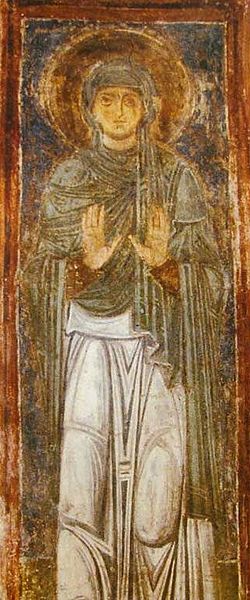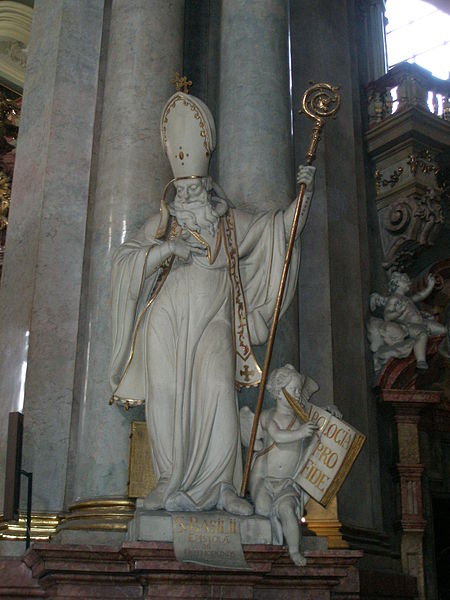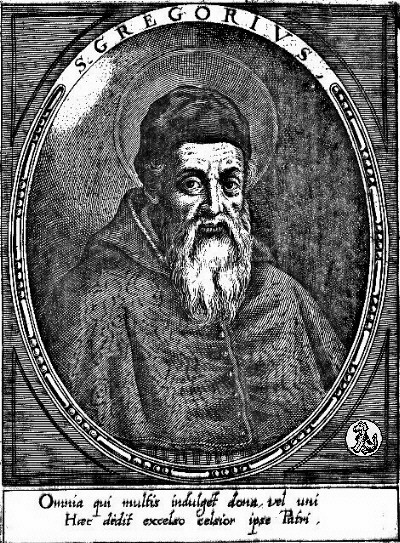St. Macrina the Younger

St. Macrina the Younger (fresco in Saint Sophia Cathedral in Kiev)
Born about 330; died 379. She was the eldest child of Basil the Elder and Emmelia, the granddaughter of St. Macrina the Elder, and the sister of the Cappadocian Fathers, Sts. Basil and Gregory of Nyssa. The last-mentioned has left us a biography of his sister in the form of a panegyric (“Vita Macrinae Junioris” in PG XLVI, 960 sq.). She received an excellent intellectual training, though one based more on the study of the Holy Bible than on that of profane literature. When she was but twelve years old, her father had already arranged a marriage for her with a young advocate of excellent family. Soon afterwards, however, her affianced husband died suddenly, and Macrina resolved to devote herself to a life of perpetual virginity and the pursuit of Christian perfection. She exercised great influence over the religious training of her younger brothers, especially St. Peter, afterwards Bishop of Sebaste, and through her St. Gregory received the greatest intellectual stimulation.

Statue of St. Basil the Great in Prague
On the death of their father, Basil took her, with their mother, to a family estate on the River Iris, in Pontus. Here, with their servants and other companions, they led a life of retirement, consecrating themselves to God. Strict asceticism, zealous meditation on the truths of Christianity, and prayer were the chief concerns of this community. Not only the brothers of St. Macrina but also St. Gregory of Nazianzus and Eustathius of Sebaste were associated with this pious circle and were there stimulated to make still further advances towards Christian perfection. After the death of her mother Emmelia, Macrina became the head of this community, in which the fruit of the earnest Christian life matured so gloriously.

St. Gregory of Nyssa
On his return from a synod of Antioch, towards the end of 379, Gregory of Nyssa visited his deeply venerated sister, and found her grievously ill. In pious discourse the brother and sister spoke of the life beyond and of the meeting in heaven. Soon afterwards Macrina passed blissfully to her reward. Gregory composed a “Dialogue on the Soul and Resurrection” (peri psyches kai anastaseos), treating of his pious discourse with his dying sister. In this, Macrina appears as teacher, and treats of the soul, death, the resurrection, and the restoration of all things. Hence the title of the work, ta Makrinia (P.G. XLVI, 12 sq.). Her feast is celebrated on 19 July.
J.P. KIRSCH 1913 Catholic Encyclopedia
Born about 330; died 379. She was the eldest child of Basil the Elder and Emmelia, the granddaugher of St. Macrina the Elder, and the sister of the Cappadocian Fathers, Sts. Basil and Gregory of Nyssa. The last-mentioned has left us a biography of his sister in the form of a panegyric (“Vita Macrinae Junioris” in PG XLVI, 960 sq.). She received an excellent intellectual training, though one based more on the study of the Holy Bible than on that of profane literature. When she was but twelve years old, her father had already arranged a marriage for her with a young advocate of excellent family. Soon afterwards, however, her affianced husband died suddenly, and Macrina resolved to devote herself to a life of perpetual virginity and the pursuit of Christian perfection. She exercised great influence over the religious training of her younger brothers, especially St. Peter, afterwards Bishop of Sebaste, and through her St. Gregory received the greatest intellectual stimulation. On the death of their father, Basil took her, with their mother, to a family estate on the River Iris, in Pontus. Here, with their servants and other companions, they led a life of retirement, consecrating themselves to God. Strict asceticism, zealous meditation on the truths of Christanity, and prayer were the chief concerns of this community. Not only the brothers of St. Macrina but also St. Gregory of Nazianzus and Eustathius of Sebaste were associated with this pious circle and were there stimulated to make still further advances towards Christian perfection. After the death her mother Emmelia, Macrina became the head of this community, in which the fruit of the earnest Christian life matured so gloriously. On his return from a synod of Antioch, towards the end of 379, Gregory of Nyssa visited his deeply venerated sister, and found her grievously ill. In pious discourse the brother and sister spoke of the life beyond and of the meeting in heaven. Soon afterwards Macrina passed blissfully to her reward. Gregory composed a “Dialogue on the Soul and Resurrection” (peri psyches kai anastaseos), treating of his pious discourse with his dying sister. In this, Macrina appears as teacher, and treats of the soul, death, the resurrection, and the restoration of all things. Hence the title of the work, ta Makrinia (P.G. XLVI, 12 sq.). Her feast is celebrated on 19 July.
J.P. KIRSCH
Tagged as:
Family,
Royal and Noble Saints,
Saints,
World of nobility








